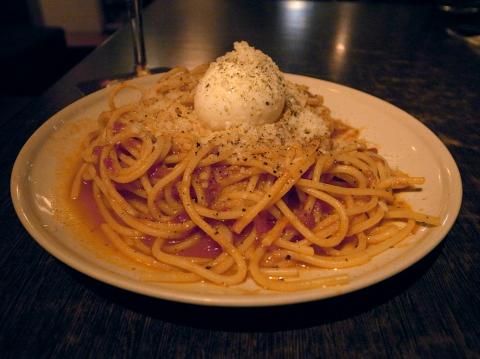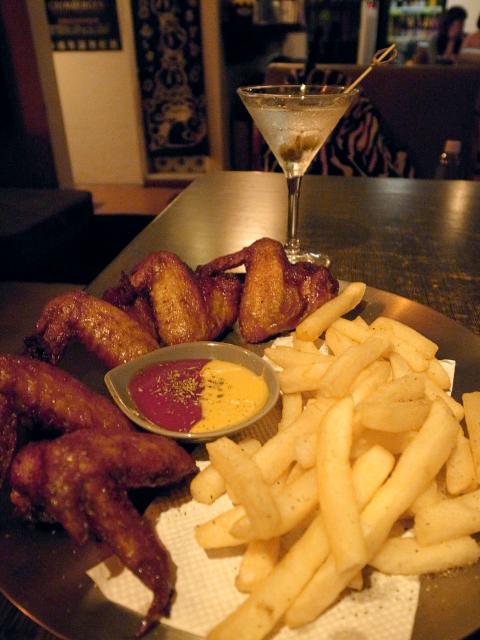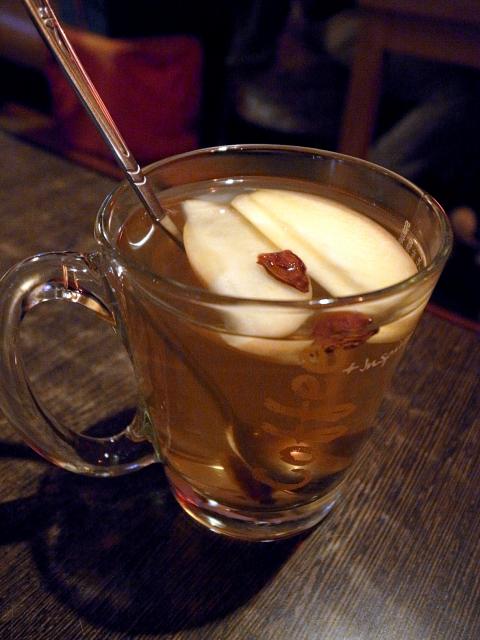T here was a sense that something was amiss in Shida (師大) when my drinking companions and I stood in front of the apartment building in which Bistro O is located. The door was locked. A sign said reservations must be made ahead by phone. We called, and a few minutes later someone came down and let us in.
She told us that the bar will be closed for half a year starting next month, but it is not certain whether business will be resumed after the break. The woman, however, kept her lips sealed over the reason behind the closure.
A few days later, the news of Underworld (地下社會) shutting down on June 15 hit Facebook. Sadly, the basement rock club has lost its battle against outdated regulations, inert bureaucracy and the Shidahood Self Help Association (師大三里里民自救會), a neighborhood lobby group that has taken credit for the mass closures of restaurants and shops in the Shida area.

Photo: Ho Yi, Taipei Times
Though the future may look dim, at least for now the city’s rebels and bacchanalians can still count on the two longtime Shida businesses to have a great night out.
Tucked away in the maze of alleys that constitute the Shida night market, Bistro O feels like an oasis of seclusion from the hubbub outside. It is dark, atmospheric and filled with threadbare furniture that strangely lends the place a bohemian charm. A couple of fluffy felines occasionally glide through the space, and like their human companions that work at the bar, they seem detached, minding only their own business.
What is offered at the bar is a completely different matter. The bar’s remarkably long list of alcoholic drinks is intended to make a boozer squeal with excitement. The wide spectrum of drinks ranges from classical cocktails, beer (mostly Belgian), to spirits and innovative concoctions. The bar also devises its variations of the classics, with the drink menu beginning with more than a dozen varieties of long island iced tea (NT$350) including mixtures with absinth and black tea. There is an equal number of martini varieties among which grasshopper (NT$200) sees pepper mint and cocoa, while the rose litchi martini (NT$250) fuses sake and gin with rose honey, litchi fruit and cranberry juice.

Warning: Excessive consumption
of alcohol can damage your health.
Photo: Ho Yi, Taipei Times
Tipplers who prefer to imbibe liquor by the shot should look no further than the extensive section of premium spirits that include Hendrick’s gin (NT$230 per glass and NT$2,300 per bottle) from Scotland, Poland’s Potocki vodka (NT$240 and NT$2,400), France’s Grey Goose (NT$240 and NT$2,400), Lagavulin 16 year old whisky (NT$340 and NT$3,400) and Patron tequila (NT$180 per shot and NT$270 per glass).
For health-conscious drinkers, the bar has gone through the trouble of making their own liqueurs using fresh fruit and homegrown herbs. The end product includes lavender cassis (NT$250), caipilrinha cachaca (NT$250) and mojito fruit mojito (NT$250) with handmade jam.
Female imbibers will appreciate the thoroughness of the all-female staff. They concoct sweet alcoholic beverages including hot chocolate with rum (NT$200). And, for that special female time of the month, there is the Kahlua and milk tea (NT$200).

Warning: Excessive consumption
of alcohol can damage your health.
Photo: Ho Yi, Taipei Times
The bar also carries a respectable menu of pub grub, pasta and sandwiches. The soft egg tomato pasta with Parmesan cheese (NT$200) and walnut egg yolk cream pasta (NT$200) we recently tried were on a par with those offered in restaurants. Flavored with rosemary, the buffalo wings with French fries (NT$300) were a table favorite.
Unfortunately, hookahs are no longer available in the establishment.
Bistro O is having a special on all cocktails and spirits before its hopefully temporary shutdown on April 30. Take 20 percent off the original price and you will have an intoxicating night in Shida before the above-mentioned self-help association turns the bustling neighborhood into a dull residential area.

Exceptions to the rule are sometimes revealing. For a brief few years, there was an emerging ideological split between the Democratic Progressive Party (DPP) and Chinese Nationalist Party (KMT) that appeared to be pushing the DPP in a direction that would be considered more liberal, and the KMT more conservative. In the previous column, “The KMT-DPP’s bureaucrat-led developmental state” (Dec. 11, page 12), we examined how Taiwan’s democratic system developed, and how both the two main parties largely accepted a similar consensus on how Taiwan should be run domestically and did not split along the left-right lines more familiar in

As I finally slid into the warm embrace of the hot, clifftop pool, it was a serene moment of reflection. The sound of the river reflected off the cave walls, the white of our camping lights reflected off the dark, shimmering surface of the water, and I reflected on how fortunate I was to be here. After all, the beautiful walk through narrow canyons that had brought us here had been inaccessible for five years — and will be again soon. The day had started at the Huisun Forest Area (惠蓀林場), at the end of Nantou County Route 80, north and east

Specialty sandwiches loaded with the contents of an entire charcuterie board, overflowing with sauces, creams and all manner of creative add-ons, is perhaps one of the biggest global food trends of this year. From London to New York, lines form down the block for mortadella, burrata, pistachio and more stuffed between slices of fresh sourdough, rye or focaccia. To try the trend in Taipei, Munchies Mafia is for sure the spot — could this be the best sandwich in town? Carlos from Spain and Sergio from Mexico opened this spot just seven months ago. The two met working in the

This month the government ordered a one-year block of Xiaohongshu (小紅書) or Rednote, a Chinese social media platform with more than 3 million users in Taiwan. The government pointed to widespread fraud activity on the platform, along with cybersecurity failures. Officials said that they had reached out to the company and asked it to change. However, they received no response. The pro-China parties, the Chinese Nationalist Party (KMT) and Taiwan People’s Party (TPP), immediately swung into action, denouncing the ban as an attack on free speech. This “free speech” claim was then echoed by the People’s Republic of China (PRC),